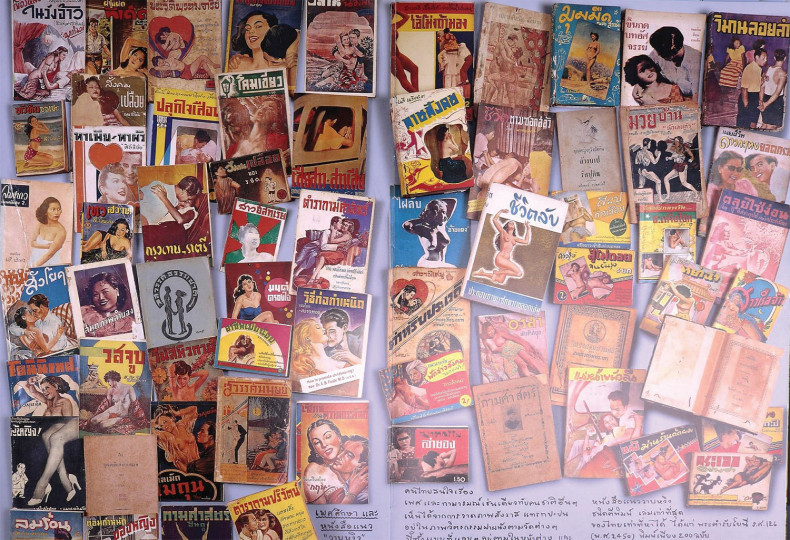A lecturer explores local celebrity culture and socialite women found in early magazines.
In the erotic novel Hom Dok Praduan (1968), Rong Wongsawan hints that a teenager fondled his flesh in front of her. “On the door is a cover photo of a socialite in Bangkok. Clad in her swimsuit, she allows waves to break on her thighs. But someone with restless hands drew overgrown grass so that he can rub it gently until it is torn.
(In Mathayom 4, he often fantasised about her. The first syllable of her name begins with the mor letter. He feels thankful whenever she comes into his mind […]).”
On the cover of the front page, an outgoing woman poses with a seductive charm. Inside, however, she is condemned for beguiling a man or getting ravished and bringing disgrace to her social standing. Such an explicit story is accompanied by a lurid headline like “adulterous” or “deflowered” along with photos that come close to pornography. If Americans have weekend newspaper supplements, Thais have chiwit lae sangkhom (life and society) magazines.
“It is a nexus of two phenomena — the emergence of a new genre of print media and socialites — in the mid-century,” said Arthit Jiamrattanyoo, lecturer in Southeast Asian History at Chulalongkorn University’s Faculty of Arts. After two years of study, his research will be published this year. “I argue that life and society magazines played a key role in the formation of an early wave of celebrity culture by constructing and commodifying a new social category of socialite women.”
Witt Suddhasthira, a newspaper journalist and author, introduced the term sao sangkhom (Thai for female socialite or debutante) to local readers. He furthered his education in journalism in the Philippines in 1939 when it underwent a period of transition from a colony of the US to an independent country (1935-1946). World War II, however, cut short his study and forced him to return home in 1942. In Trawen Manila (1943), he recounts his experience of sojourn in the Philippines, including an encounter with socialites.
“The term sao sangkhom appeared first in his work, but sometime later got a negative connotation,” said Arthit. “A magazine column in 1950 said the term had been stigmatised. MR Kukrit Pramoj satirised socialites, saying that parents should not have given birth to them. What tarnished their image? It is the beginning of my research. Clues may lie in what I call chiwit lae sangkhom magazines.”
Source: Vietnamnews


